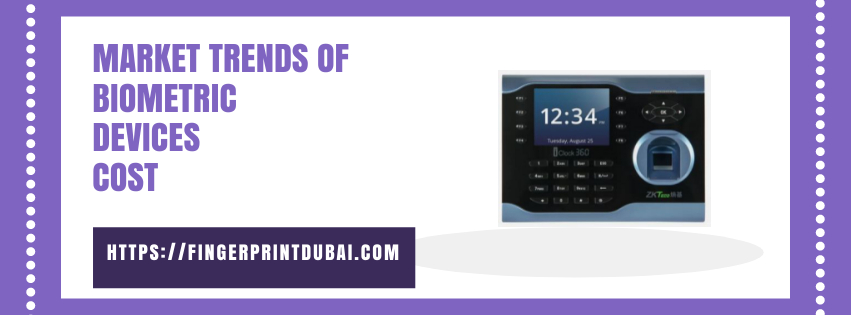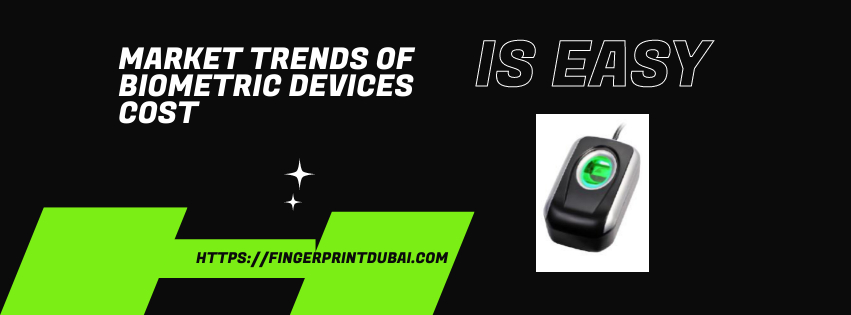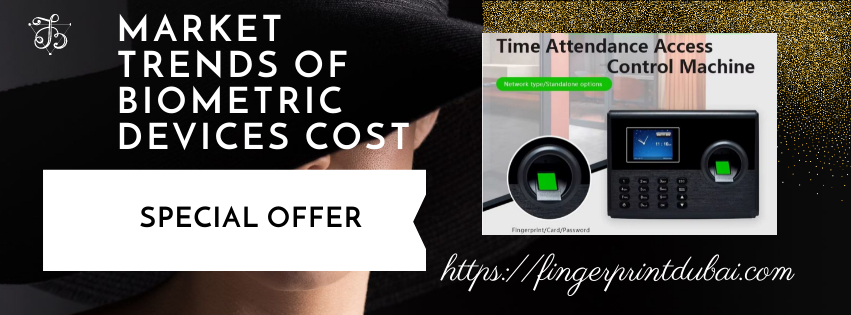Market Trends of Biometric Devices Cost
Market Trends of Biometric Devices Cost: Expanded Analysis, Data & Regional Prices
The market trends of biometric devices cost are reshaping budgets across enterprises, governments, and households as the sector surges with innovation and adoption

Analysis of biometric device pricing trends and competition
Biometric systems no longer belong only to sci-fi films or high-security labs.
Businesses use them for attendance, banks for secure onboarding, airports for border control, and homeowners for smart locks.
Tracking the market trends of biometric devices cost helps buyers make smarter tradeoffs between price, accuracy, and long-term value to analysis of biometric device pricing trends and competition.
Detailed report on biometric device market trends and pricing
The biometric market is large and growing fast, which affects device pricing in predictable and surprising ways.
Recent industry reports estimate the global biometric market in the tens of billions of dollars and project double-digit Compound Annual Growth Rate s through the late 2020s.
Rapid market expansion puts downward pressure on commodity device prices while simultaneously enabling premium products to command higher margins.
That split—cheaper mass devices vs pricier enterprise solutions—is a central theme in the market trends of biometric devices cost.
Biometric system price comparison by region and technology
Fingerprint readers remain the most cost-effective biometric entry point.
Basic USB or standalone fingerprint scanners can start at under AED 330 for consumer models and climb to several thousand dollars for multi-finger industrial units with liveness detection. Facial recognition terminals and camera-based systems typically sit higher on the price curve, often ranging from a few hundred dollars for basic models to AED 1,200– AED 2,500 per door for business-grade units with 3D depth sensing and AI processing. Specialized biometrics—iris scanners, palm-vein sensors, and multimodal hubs—remain premium, commonly used where the cost of a breach outweighs Face Identification & Time Attendance hardware spend.
What factors affect biometric devices cost in global markets?
Scale and commoditization reduce manufacturing costs for common sensors and processors.
Component standardization and global competition push down retail prices for entry-level fingerprint and basic facial devices.
At the same time, enterprise buyers demand features—on-device AI, encrypted templates, edge processing, federated identity integration—that require costly R&D and certification.
Those advanced features keep enterprise-grade prices elevated even as consumer models fall.

Biometric device cost analysis and price forecast 2025
Dubai: mid-range biometric access terminals (popular ZKTeco models) are available around the low hundreds of dollars (e.g., ~520 AED for a commonly sold fingerprint terminal).
This reflects local distributors, regional demand for high security, and competitive reseller pricing. India: entry-level attendance and access devices are extremely price-sensitive, with many popular fingerprint terminals selling for roughly ₹5,000–₹15,000 on e-commerce platforms during sales.
High volumes and local brands compress retail costs. United States: consumer-facing biometric smart locks or palm/facial-enabled devices appear in the $400–$900 retail bracket (example: a palm-recognition smart lock launched around $399), while enterprise facial terminals are commonly priced per-door in the $1,000+ range.
Total cost of ownership (TCO) matters more than sticker price
AED 550 fingerprint scanner may sound cheap, but installation, integration with access control software, subscription fees for cloud analytics, and maintenance inflate TCO.
Conversely, a AED 1,500 facial terminal with edge AI and lifecycle updates can be cheaper over 5 years if it reduces admin time, false rejects, and security incidents.
Shrewd procurement teams now evaluate the market trends of biometric devices cost in TCO terms, not unit price alone
Regulation, privacy, and compliance—hidden cost drivers
Privacy rules and certification requirements add overhead for manufacturers and buyers.
Regions with strict biometric data laws force vendors to implement advanced encryption, local storage options, and audit features—each adding to device cost and the services that support them.
In markets where compliance matters (for example, certain Gulf and European jurisdictions), compliant devices command a premium and influence the market trends of biometric devices cost upward

The COVID effect and contactless premiums
The pandemic accelerated demand for contactless biometrics—facial, iris, and palm recognition—temporarily boosting prices for those categories.
Once suppliers scaled production, mid-tier contactless prices stabilized, but user preference for touchless solutions has permanently shifted procurement toward slightly higher upfront spend for perceived safety and hygiene.
This transition is a key structural change within the market trends of biometric devices cost.
AI, edge compute, and software licensing — the new recurring costs
Modern biometric devices frequently ship with on-board AI and require firmware updates, model retraining, or cloud processing credits.
Software licensing and model monitoring create recurring costs that are part of the market trends of biometric devices cost story—sometimes dwarfing hardware price over time.
Competitive dynamics why some brands discount heavily
Many established manufacturers and regional OEMs like ABM Innovative FZE compete on price in volume markets. This competition benefits buyers but forces thinner margins, leading vendors to upsell software, extended warranties, and managed services—again shifting the cost focus from hardware to combined offerings.
Procurement Face Recognition: questions to ask before you buy
Do you need contact or contactless biometric verification?
What is the expected daily transaction volume?
Will templates be stored locally, on a server, or in the cloud?
What compliance standards (encryption, ISO9001, MOHRE local laws) must the device meet?
How will the device integrate with existing access control, HR, or IAM systems?
Answering these determines where your purchase sits on the market trends of biometric devices cost spectrum and whether to prioritize hardware price or TCO access control Dubai .
Real-world examples — short case stories
A small Dubai retail chain replaced legacy RFID readers with fingerprint terminals priced around the low hundreds (each), and reduced buddy-punching and payroll errors enough to cover the upgrade in under 12 months.
This illustrates how modest hardware spends can yield quick operational ROI when matched to the right problem. A medium-sized Indian factory bought low-cost fingerprint attendance devices for under AED 500 each during a sale, but later paid for integration work and recurring cloud subscriptions that doubled five-year TCO.
This shows the classic “cheap hardware, expensive integration” trap in the market trends of biometric devices cost.
A U.S. residential user bought a palm-vein smart lock at ~$399 and gained a contactless, privacy-friendly front door solution—an example of how consumer biometrics are moving into everyday home budgets.
Predictions — where costs will go in the next 3–5 years
Entry-level biometric hardware prices will continue gradual decline due to scale and component commoditization.
At the same time, devices offering on-device AI, multimodal recognition, and certified privacy controls will preserve higher price points.
The strongest net effect in the market trends of biometric devices cost will be an increased emphasis on bundled solutions (hardware + software + service) and a shift to pricing models that reflect long-term value rather than one-time hardware cost.

FAQs — short, practical, data-driven answers
Q: What is the typical price range for fingerprint devices today?
A: Consumer and low-end standalone fingerprint scanners can be found from under $30 to several hundred dollars, while industrial and multi-finger systems can reach $1,000–$2,500.
Q: Are facial recognition systems much more expensive than fingerprint scanners?
A: Generally yes for enterprise-grade systems; retail facial terminals commonly start a few hundred dollars and enterprise units often cost $1,000+ per door depending on capabilities.
Q: Will biometric hardware become free/ubiquitous like cameras on phones?
A: Hardware will get cheaper and more ubiquitous, but secure, certified biometric systems with strong privacy guarantees will remain premium.
Q: How should a procurement team budget for biometric projects?
A: Budget for hardware, installation, integration, software licenses, subscriptions, and periodic maintenance; evaluate 3–5 year TCO rather than upfront cost alone.
Conclusion — the core takeaways you should remember
The market trends of biometric devices cost are driven by two opposing forces: commoditization that lowers prices for mass devices, and innovation plus regulation that sustains premiums for secure, feature-rich solutions.
Savvy buyers focus on total cost of ownership and match biometric capabilities to real security and operational needs.
ABM Innovative FZE offer products as per regional dynamics, software licensing, and ongoing AI investments will continue to define how prices evolve over the next decade.
4th St, Al Quoz Cemetery, Oasis Mall, Waha Street, Dubai UAE
Email : info@fingerprintdubai.com
Tell : (+971) 052 5571309

